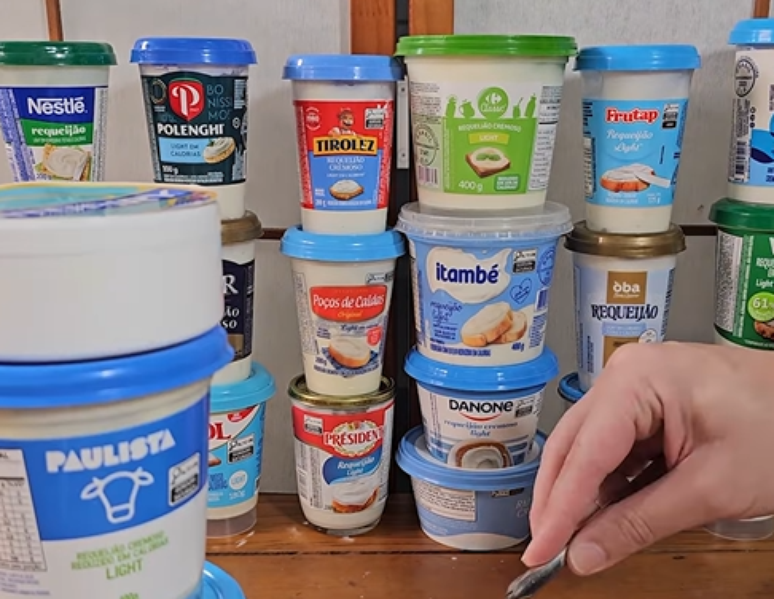Corticosteroids, hyaluronic acid, anesthetics and regenerative therapies are types of infiltrations that can be used in any joint.
Summary
There are four main types of joint infiltrations – corticosteroids, hyaluronic acid, anesthetics and regenerative therapies -, each indicated depending on the case, with the aim of relieving pain, reducing inflammation or promoting tissue regeneration.
-
BY PARTICIPATING

Joint infiltration: understanding the 4 types and uses to reduce pain
-
BY PARTICIPATING

Skin care: at what age should you use anti-aging cosmetics?
-
BY PARTICIPATING

Gracyanne Barbosa goes to hospital for tests after feeling pain in the area affected by a robbery in RJ
It seems like magic: suddenly an injection (called infiltration) is applied to the joints and the intense pain gradually improves. The applications of joint infiltration injections have increased, but contrary to what many believe, the procedure is not unique and at least four types of substances can be indicated.
“The choice is strategic and depends on the precise diagnosis. The final decision will always take into account the patient’s specific condition, the joint involved, the severity of the injury and the goals of treatment, whether to relieve pain quickly or seek long-term repair. Infiltration can be applied to virtually any joint that causes pain, such as knees, hips, shoulders, ankles and spine, as well as tendons (such as the elbow, in tennis player). and bags (small shock absorbers filled with liquid)”, explains Fernando Jorge, orthopedic specialist in knee surgery and hip surgery (HSL-RP), in Regenerative Medicine (Orthoregen-BR/USA), in Pain Intervention (Albert Einstein Hospital) and in Interventional Pain Medicine (USP Faculty of Medicine – Ribeirão Preto).
According to the doctor, the main ones are: corticosteroids (powerful anti-inflammatory drugs), hyaluronic acid (a “lubricant” that works as a joint shock absorber and anti-inflammatory), local anesthetics (to temporarily block pain) and regenerative therapies (called orthobiological).
“An example of regenerative therapy is PRP (Platelet Rich Plasma) and stem cells, which try to regenerate damaged tissues,” adds Fernando Jorge.
Infiltration with hyaluronic acid is called viscosupplementation, according to the doctor. “It is ideal for the treatment of arthrosis (osteoarthritis/osteoarthritis), mainly of the knee, but also of other joints. It is used when the acute inflammation has passed and the goal is to protect the cartilage and improve function in the medium term,” emphasizes the orthopedist.
“Imagine the joint as a gear that needs oil to function without friction. Hyaluronic acid is this natural “oil” of our joints. In osteoarthritis, this liquid thins and loses its function. Infiltration injects a purified and concentrated version of this acid directly into the joint. It works as: lubricant, to facilitate sliding between the bones; shock absorber, to absorb shock and protect cartilage; anti-inflammatory, reduce irritation and pain; and stimulating, to help the joint cells themselves produce more natural hyaluronic acid”, underlines Fernando.
There are single-dose and fractionated products. “The single dose is more comfortable for the patient, who is undergoing a single operation. In serial doses, 3 to 5 applications are performed, one per week, of products in a smaller volume. The idea is to administer the drug gradually, ‘reteaching’ the joint how to function. The choice between one or the other depends on the joint to be treated, the severity of the wear and the type of product chosen by the doctor. Both are effective”, he adds Fernando.
Immediately after application you may feel slight discomfort or a feeling of heaviness in the area for 1 or 2 days. “Relative rest is recommended for the first 48 hours. The pain relief effects are not immediate. The improvement process is gradual. The patient begins to feel significant relief after 2-4 weeks of application (or the last application, in the case of the series). The effect can last from 6 months to 1 year,” he explains.
When the infiltration is carried out with corticosteroids, the goal is to provide a powerful and fast-acting anti-inflammatory action, as in cases of shoulder bursitis that prevents movement, or a swollen and painful knee in case of osteoarthritis.
“This infiltration serves to ‘extinguish the fire’ in acute inflammatory processes, such as bursitis, tendinitis or arthrosis attacks. It does not regenerate the tissues, but drastically interrupts the cycle of inflammation and pain. It is usually carried out in a single session. It can be repeated after a few months, if necessary, but with caution, since excessive use can damage tissues such as tendons and cartilage”, he explains the orthopedist.
Immediately after infiltration, the patient may experience pain relief, often within 24 to 48 hours. “It is common to feel more pain in the first 12-24 hours due to the reaction of the corticosteroid in the area. This disappears soon after. The positive effect usually lasts for weeks to a few months,” explains Fernando.
Infiltration with anesthetics has two main purposes: diagnostic and therapeutic. “In the first case, if the doctor injects the anesthetic at a specific point and the pain disappears, this confirms that the origin of the pain was right there. This is a ‘map’ to identify the origin of the problem. In therapeutic terms, the idea is to break the ‘vicious cycle of pain’. Severe pain causes muscle spasms, which generate more pain. The anesthetic interrupts this cycle, allowing the patient to move better and begin recovery. physiotherapy”, says Fernando Jorge.
“Normally this infiltration is used in one session, often in combination with corticosteroids (the anesthetic gives immediate relief while the corticosteroid takes effect). Pain relief is instantaneous, but temporary. It lasts only a few hours (the time the anesthetic works). If used to break the pain cycle, functional improvement (allowing pain-free movement) begins as soon as the effect occurs of the anesthetic”, comments the orthopedist.
Regarding regenerative use, the doctor explains that in PRP the patient’s own blood is collected, which is centrifuged to separate and concentrate the platelets (cells responsible for healing).
“This concentrate is then injected into the injury. It releases growth factors that stimulate the healing and regeneration of tendons, ligaments and cartilage,” he comments. In stem cell therapy, stem cells (generally obtained from the patient’s bone marrow or fat tissue) are used to try to truly regenerate damaged tissues, such as joint cartilage. It is an ever-evolving field,” he explains, “Orthobiologics (regenerative) are indicated for chronic tendon injuries (such as rotator cuff epicondylitis/tendinitis), mild to moderate osteoarthritis, and some cartilage injuries. The goal is tissue healing and regeneration, not just pain control,” concludes the doctor.
inspires transformation in the world of work, in business, in society. Compasso, a content and connection agency, is born.
Source: Terra
Ben Stock is a lifestyle journalist and author at Gossipify. He writes about topics such as health, wellness, travel, food and home decor. He provides practical advice and inspiration to improve well-being, keeps readers up to date with latest lifestyle news and trends, known for his engaging writing style, in-depth analysis and unique perspectives.








